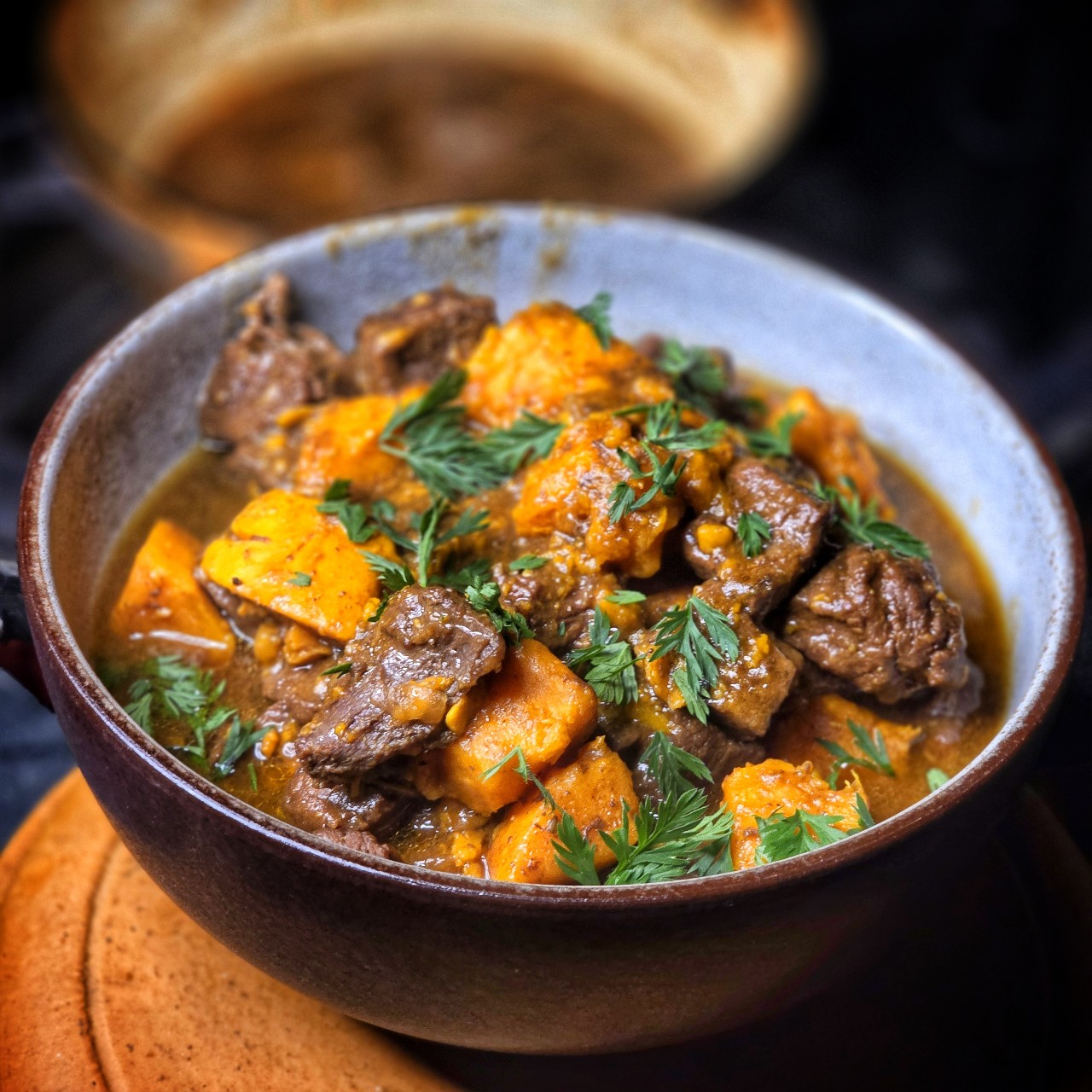Who doesn’t know them….those dishes you could sink your teeth into. My Japanese game goulash Nikujaga definitely belongs in this category. The wonderful taste of game meat combined with sweet potato and Japanese seasoning. All of this delicately braised, it melts in the mouth and gives us a comforting and satisfying feeling. Everyone knows dishes like this and I would like to add this Japanese game goulash to your list.
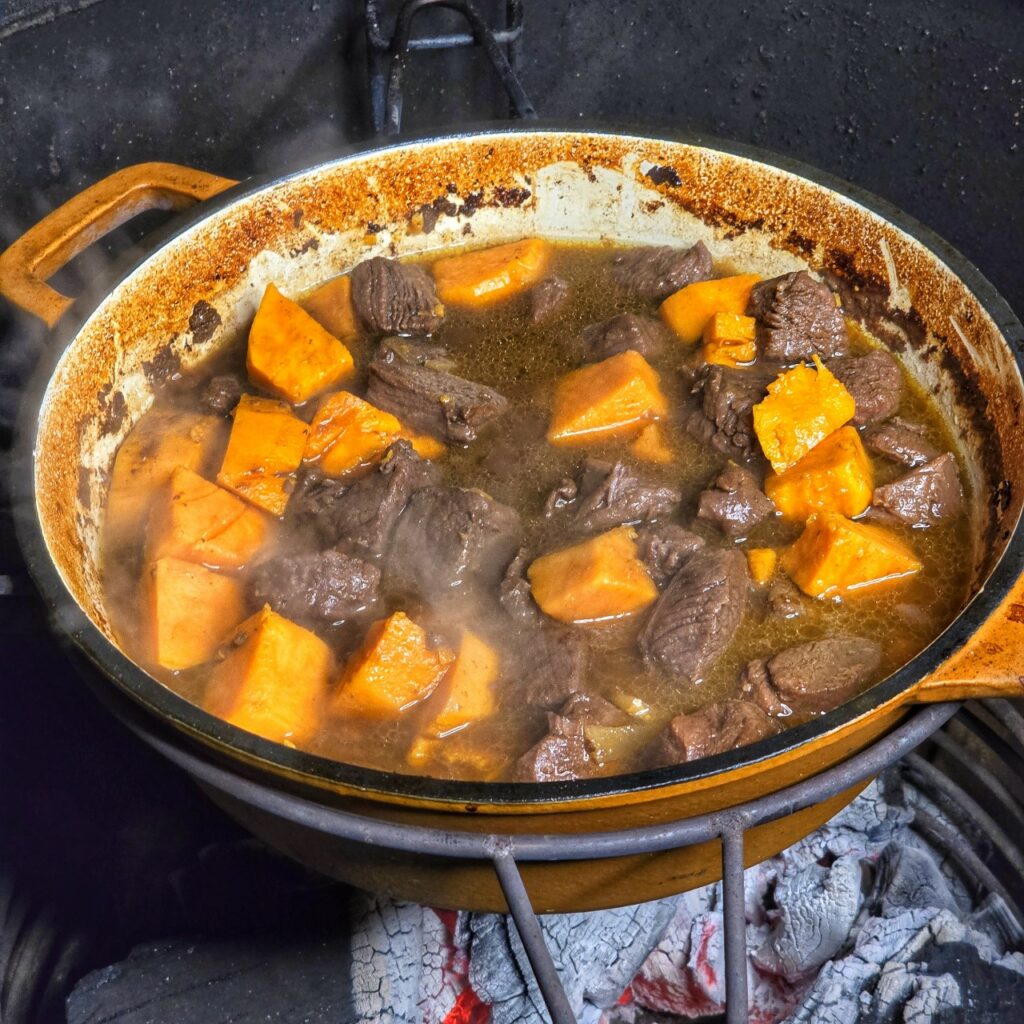
Nikujaga – Japanese goulash / Japanese stew
Nikujaga is a traditional Japanese dish that falls under the category of home cooking. The name “nikujaga” is made up of the Japanese words “niku” for meat and “jaga” for potato. It is a type of stew or goulash that is usually made from beef, potatoes, onions and other vegetables. I use venison here, and sweet potatoes instead of potatoes, which in my opinion enhances this already wonderful dish.
The preparation of nikujaga varies depending on the region in Japan and personal preference, but often the meat is first cut into thin slices and then braised with soy sauce, sugar, mirin (sweet rice wine) and dashi (Japanese broth). However, I cut the meat into classic goulash cubes and thus extend the braising time. In any case, the longer the better. Then the potatoes, onions and often carrots and other vegetables are added. The whole thing is then cooked until the meat is tender and the vegetables are soft.
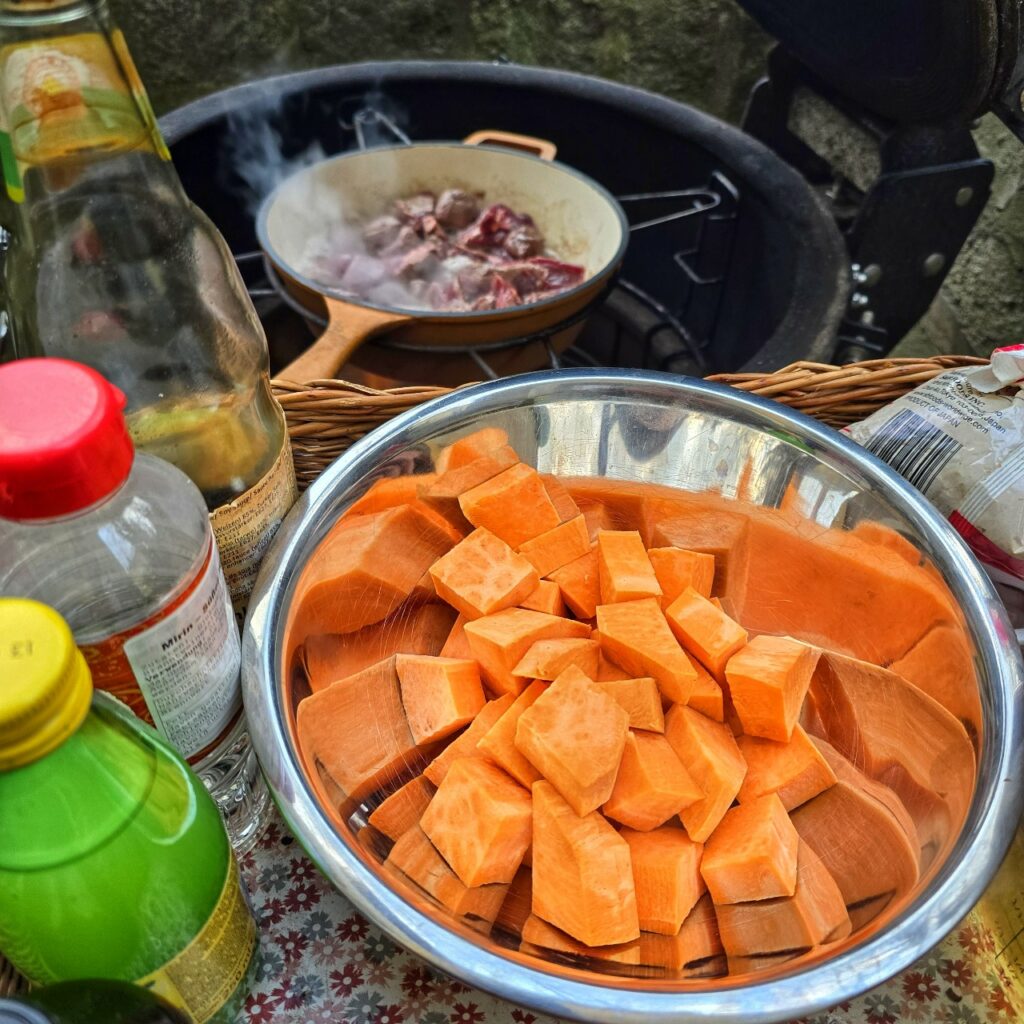
As already mentioned, Nikujaga is a popular home-style dish that is often prepared as a family meal. It is hearty, easy to prepare and offers a balanced combination of meat and vegetables. It is often served with rice and, like pretty much any goulash or stew, is particularly popular in the winter months as it warms and fills you up.
Venison for Japanese game goulash
Venison is a perfect choice for nikujaga, but of course you can also prepare it with beef. I will do the same. One advantage of deer meat for Japanese venison goulash is certainly that it is lean. Compared to other types of meat such as beef or pork, venison contains less fat and calories. Deer meat is also an excellent source of high-quality protein.
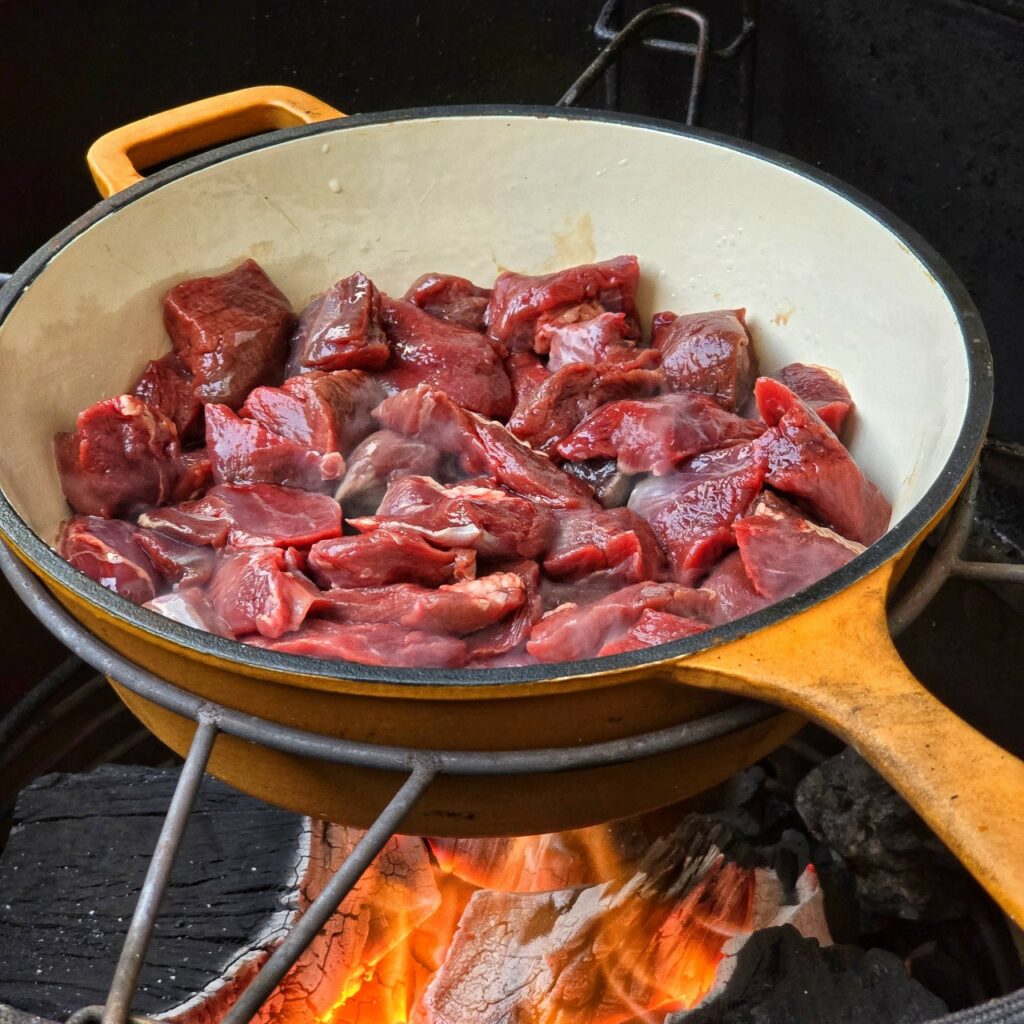
And let’s not forget the taste. It has a delicate taste that combines well with various flavors and spices, including Japanese ones. Venison can generally be prepared in a variety of ways, including roasting, grilling, braising and as minced meat. Do you also like eating venison? Write it in the comments!
And not to forget: Furthermore, deer hunting is a sustainable practice that helps to maintain the balance of wildlife populations. This makes venison an environmentally friendly source of meat compared to meat from factory farming.
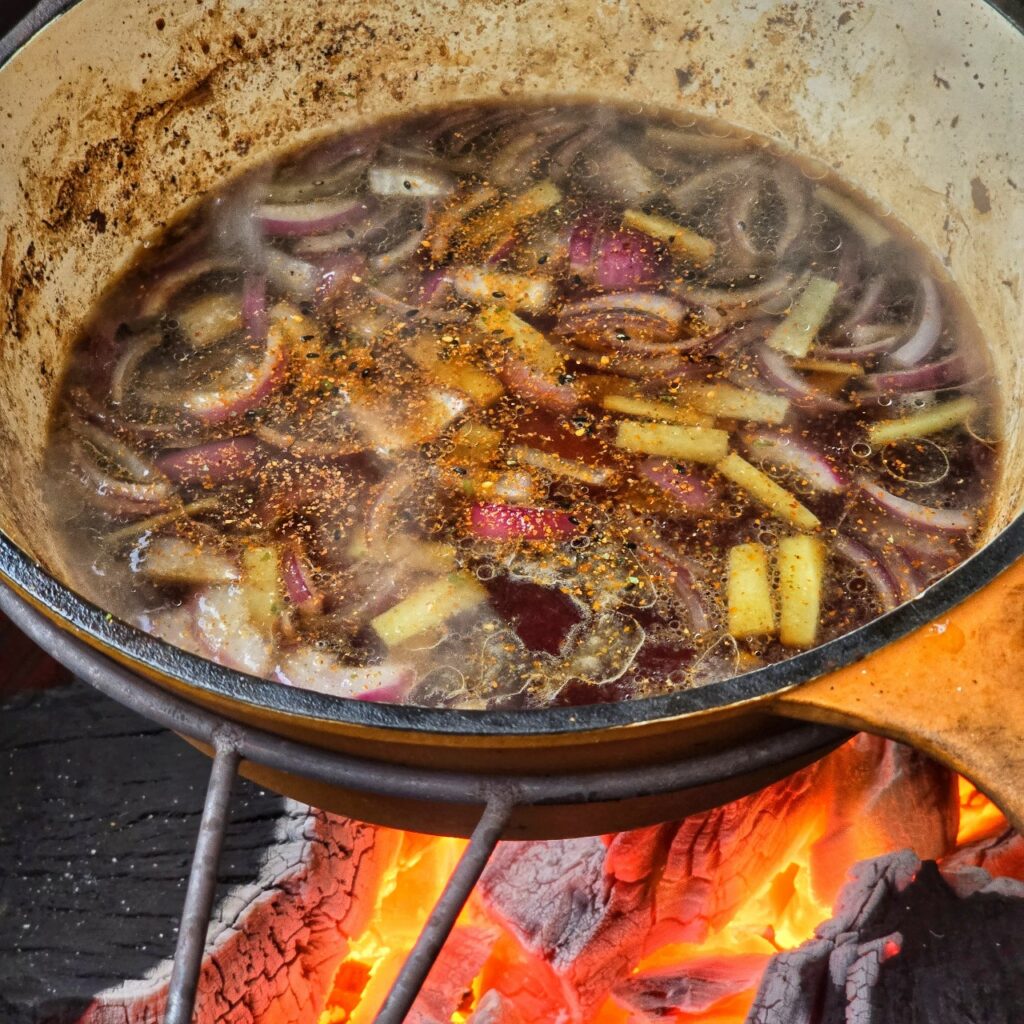
The recipe for Nikujaga – Japanese game goulash
So, what do we need for our Japanese game goulash? Besides good meat, in my case sweet potato, but potatoes would also work. If you like, you can also add carrots, for example, which also goes very well. Also onion and ginger.
The Japanese seasoning for Nikujaga is achieved using dashi*, among other things. This is a Japanese broth that is used as the basis for many traditional Japanese dishes. It is a clear, spicy broth made from dried bonito flakes (katsuobushi), dried seaweed leaves (kombu) or a combination of both. We also need soy sauce; as always, I use a reduced-salt soy sauce*.
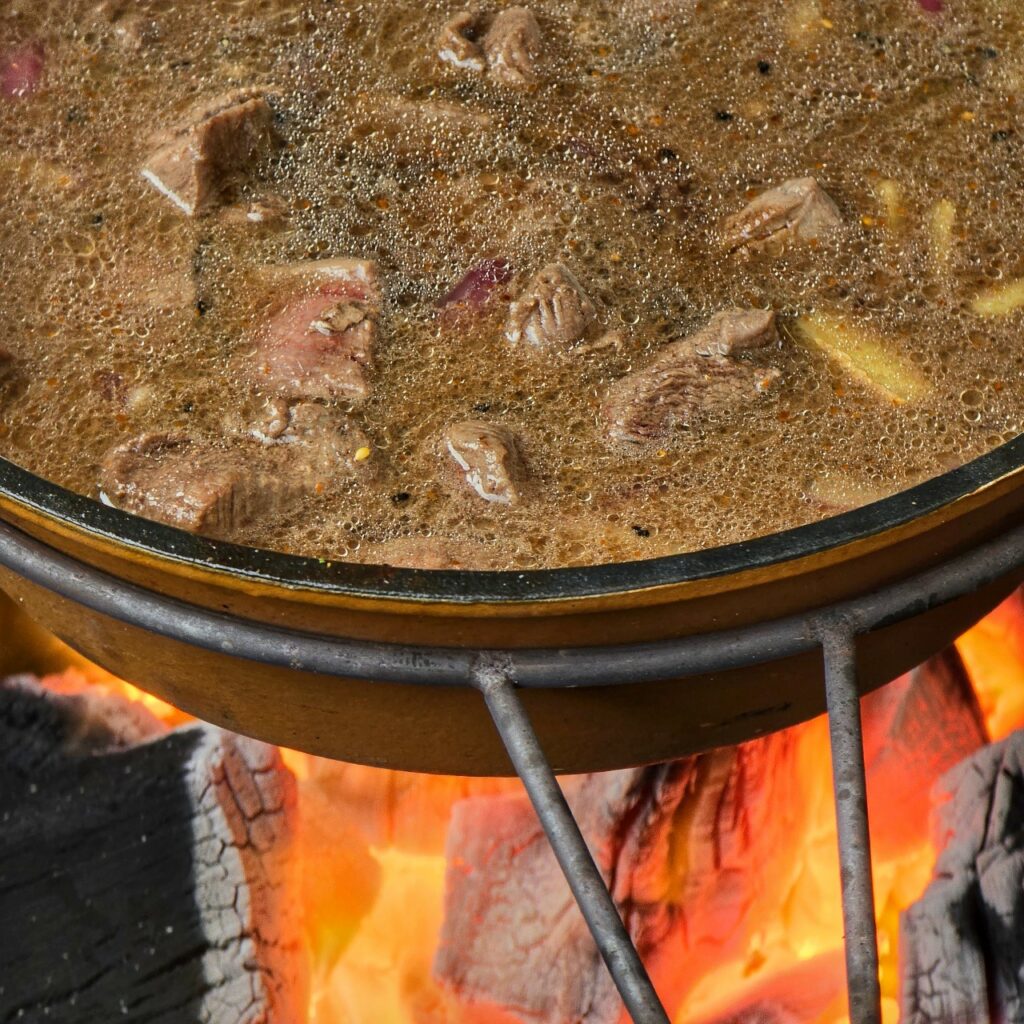
Then there is mirin*, a sweet rice wine. This is often used as a seasoning in Japanese cuisine and is made from fermented sticky rice. Finally, add a little roasted sesame oil* and togarashi. Togarashi spice powder* is a Japanese spice blend consisting of various ground chili peppers and other ingredients. It is slightly spicy, although the exact composition of togarashi often varies. However, it typically contains ground chili peppers, sesame seeds, roasted orange peel (yuzu), seaweed (nori) and sometimes ginger, Sichuan pepper or other spices.
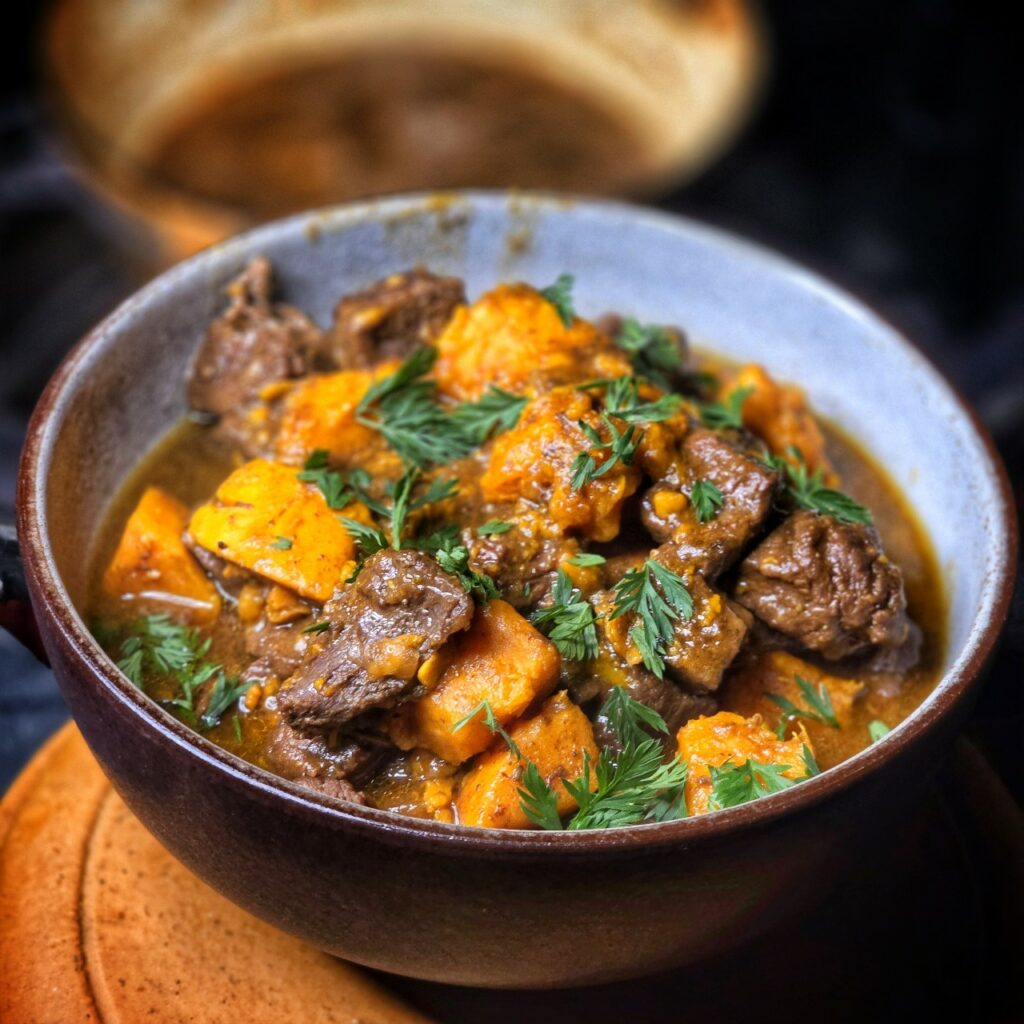
As always, you will find the exact quantities at the bottom of the recipe. And if you are also a fan of Japanese cuisine, then take a look at the following, for example: Salmon teriyaki in a wok or Japanese asparagus rolls with beef.
You can also find my key ingredients for most Asian dishes in my Amazon storefront. I would be happy if you shop via these links or visit Amazon via one of these links for other purchases to support me a little.
Japanisches Wildgulasch – Nikujaga
Ingredients
- 500 g Hirschfleisch
- 300 g Süßkartoffel
- 1 rote Zwiebel
- 4 cm Ingwer
- 800 ml Dashi Brühe, evtl. mehr
- 80 ml helle Sojasauce
- 50 ml Mirin
- 2 EL geröstetes Sesamöl
- 1 EL Togarashi-Gewürzpulver
- Öl zum Braten
Instructions
- Das Fleisch in mundgerechte Stücke schneiden, die Süßkartoffel ebenso. Ingwer in feine Stifte und die Zwiebel ebenfalls klein schneiden.
- Im Dutch Oven oder Topf das Hirschfleisch unter Zugabe von Öl scharf anbraten und rundherum bräunen. Herausnehmen.
- Nun die Zwiebel und den Ingwer in dem Öl braten. Mit der Dashi-Brühe aufgießen. Sojasauce, Mirin, Sesamöl und Togarashi-Gewürzpulver hinzufügen und alles vermischen.
- Nun das Hirschfleisch wieder hinzugeben, Deckel auf den Topf oder Dutch Oven und für 2 Stunden bei ca. 160 Grad im Grill oder Backofen schmoren. Nach einer Stunde eventuell durchmischen und Dashi-Brühe nach Belieben nachgießen.
- Nach den zwei Stunden die Süßkartoffel hinzufügen und für eine weitere halbe Stunde schmoren.
- Japanisch standesgemäß mit Reis genießen.

